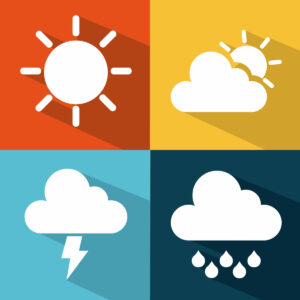The ongoing El Niño event in the Pacific Ocean is causing record-setting warm winters in Wisconsin. This is leading to lower snowfall totals and drier conditions. Shane Hubbard, research scientist at the Space Science and Engineering Center at UW-Madison, is closely monitoring the situation.
“The impacts of El Niño are evident in Wisconsin, with warmer conditions persisting from November through December and into mid-January,” explains Hubbard. “This event is likely to be one of the top five El Niño events. Historically, we often see a transition from El Niño to La Niña conditions.”
Three consecutive La Niñas have been observed, with a high likelihood of another occurring next winter. This pattern of alternating between El Niño and La Niña conditions is common after a particularly strong El Niño event.
Wisconsin has already experienced a significant decrease in snowfall. Southern regions are approximately 17 inches below normal and there are even higher deficits in northern areas. The state is bracing for a cool down towards the end of January, but Hubbard says there is still potential for extended dry conditions.
The impacts of El Niño extend beyond winter temperatures, affecting precipitation patterns and soil moisture crucial for agriculture. Last year’s dry conditions and mild winter, attributed to El Niño, have raised concerns about the upcoming growing season.
“In 2023, southern Wisconsin experienced extreme dryness, affecting the growing season with a nine-inch precipitation deficit. While most of the state has caught up on precipitation, southwestern Wisconsin is still lagging. This raises concerns about soil moisture for the early growing season,” explains Hubbard.
Global weather patterns, including events like hurricanes, also play a role in Wisconsin’s agriculture. El Niño tends to reduce the number of hurricanes, leading to fewer precipitation events, while La Niña increases hurricane activity. Farmers are advised to stay informed about these patterns, as they can impact crop yields and market conditions.
Looking ahead, Hubbard anticipates a transition to La Niña conditions, possibly benefiting Wisconsin’s precipitation levels in the fall and winter months of 2024. The resilience of crops and adaptive farming practices, including the use of drought-resistant hybrids, are recommended to mitigate the impact of varying weather conditions.


